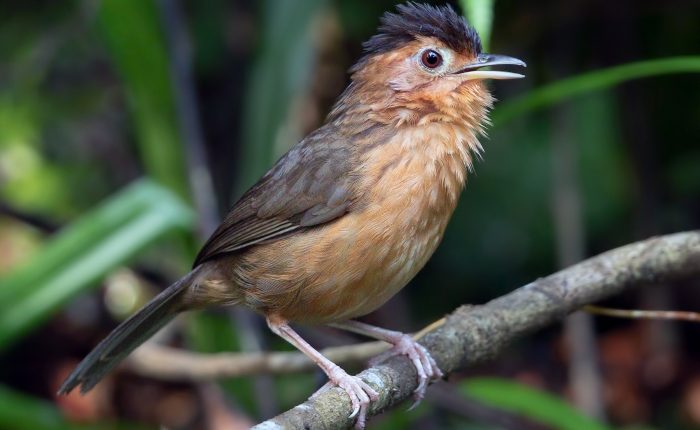Nestled within the heart of Sri Lanka lies Yala National Park, a haven for nature enthusiasts and wildlife aficionados. While Yala is renowned for its diverse ecosystem and thriving wildlife, it is the park’s endemic avian residents that truly steal the spotlight. In this exploration, we’ll unveil the allure of five of the unique and captivating birds that call Yala home. As we delve into the remarkable world of these feathered creatures, we’ll also reveal how Tribe Yala, a luxury resort in the heart of this pristine wilderness, enhances your experience with an exclusive blend of comfort and adventure.
Crimson-Fronted Barbet: Nature’s artistry takes the form of this beautiful avian, also known as the Sri Lanka Barbet, with its vibrant plumage of green, blue, red and orange, reminiscent of a painter’s palette. This charismatic bird, usually found in open-wooded areas, gardens, forest and forest edges in the lowlands and foothills, showcases the wonder of Yala’s biodiversity. Listen for its incessant “pop-pop-pop-pop” song which is the calling card to spotting this bright bird from amongst the treetops where it may be feeding on fruits or figs in groups of up to at least 30 individuals during the fruit season!
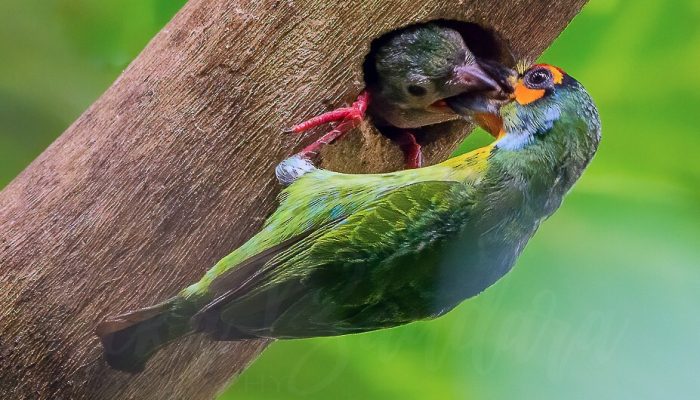
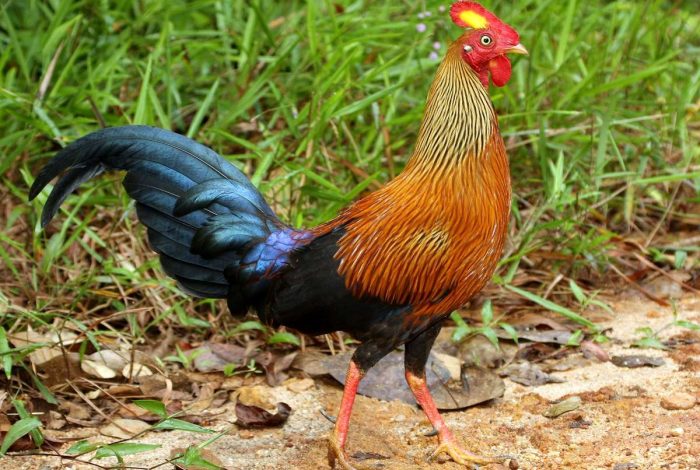
Sri Lankan Junglefowl: As the sun peeks over the horizon, the harsh ‘chyok-cher-chow’ of the Sri Lankan Jungle Fowl echos through the wilderness. This endemic bird, the male counterpart with its resplendent orange plumage, cockerel-like glossy black tail and prominent red comb, is Sri Lanka’s national bird and a symbol of pride for the island. The smaller female counterpart is duller with brown and white plumage giving it the perfect camouflage for a nesting bird. Its habitat spans from the forest floor to the lower canopy, where it forages for seeds, insects and small invertebrates. Tribe Yala’s experienced rangers will help you spot this colourful fowl during your safari, offering interesting insights into its courtship displays and territorial behaviour.
Sri Lanka Grey Hornbill: The maestro of echoing calls from among the treetops with its accelerating ‘kok-kok-kok’, resonating through the forest and creating an atmosphere of enchantment. This endemic hornbill has a grey upper side and whitish underparts, differentiating it from the only other hornbill in the region, the black and white Malabar Pied Hornbill. However, the most notable difference between the two is the Grey Hornbill’s absence of a casque on its bill. Both male and female counterparts are largely similar. However, the male has a cream-coloured beak while the female has a black beak with a cream stripe running along the side. This bird’s diet consists of fruits, insects and small animals, and it often forages in the treetops, using its powerful beak to reach its meals. Its nesting habits, characterised by sealing the female within a tree cavity during the incubation period, are truly unique.
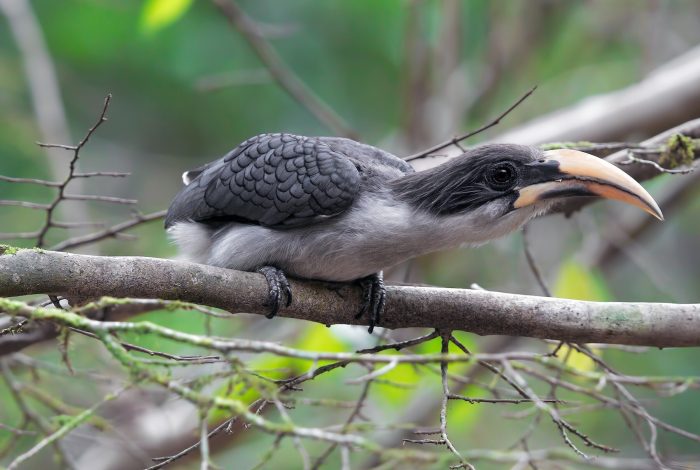
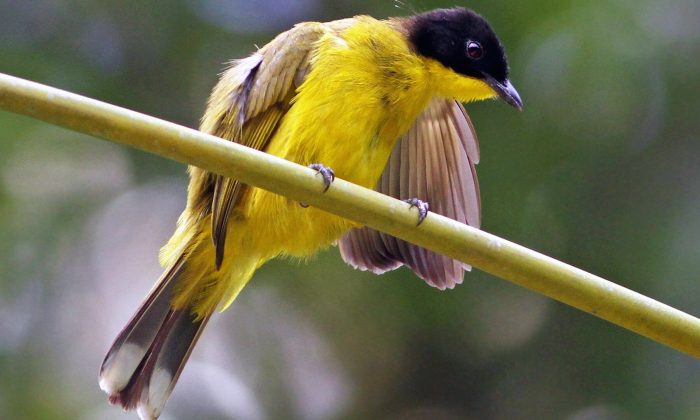
Black-Capped Bulbul: Perched amidst the foliage, the Black-Capped Bulbul enchants with its serenade of sweet notes, a series of warbling whistles, ‘wet-wet-wet-wer-wer-wer-weer’. Its glossy black head contrasts elegantly with its greenish plumage and bright yellow underside. This bulbul’s diet consists of fruits, insects and nectar making it a vital link of Yala’s complex ecological web. Exploring Yala in April or May will give you a good chance at spotting this avian nesting generally always in a small sapling at the forest edge, bordering a jungle path or a stream.
Brown-Capped Babbler: This small bird with a distinct black-brown crown, dark tail and an underside the same colour of Ceylon Cinnamon, thrives in the understory, engaging in lively social interactions. This endemic bird holds a special place in Sri Lanka due to its appearance on the 4 rupee postal stamp. It is omnivorous and its diverse diet includes insects, fruits, and seeds. These elusive birds tend to occur closer to the ground where it builds its nest on the ground or in a hole, concealed in dense masses of foliage. Although somewhat difficult to spot, this babbler is known for its continuous chattering, a chirpy, repetitive ‘wit-wi-yoo’, a sound that mirrors the bustling energy of the forest, the most notable indication of their presence. Try spotting a pair to uncover the hidden world of these social chatterboxes.
